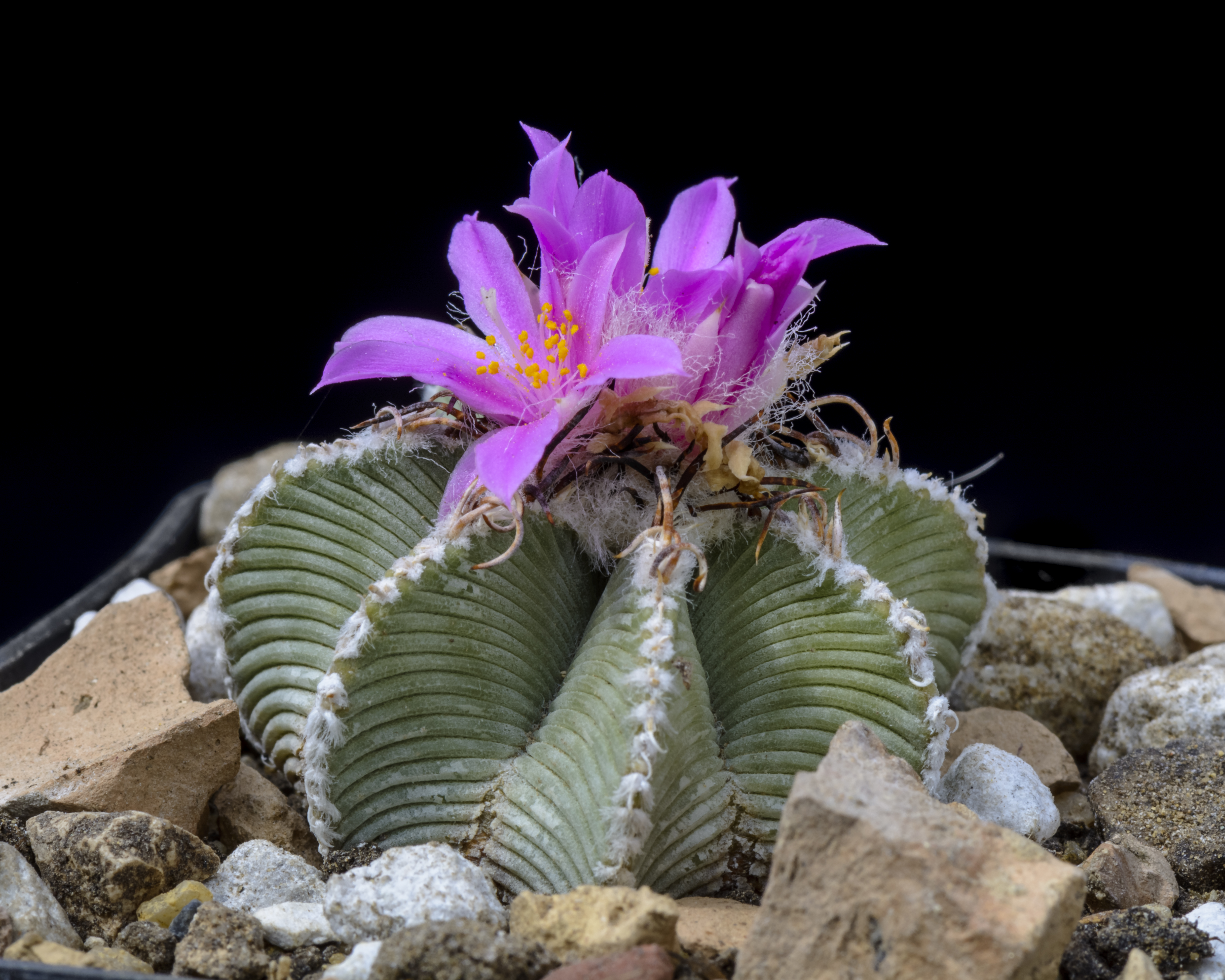Aztekium hintonii
(Aztekium hintonii)

Description
Aztekium hintonii, is a species of cactus in the genus Aztekium. It is the second species of Aztekium discovered by George Sebastián Hinton in 1991. Aztekium hintonii is endemic to Nuevo León. The specimens are small solitary plants with green to greyish-green stem, up to 10 cm in diameter. The ribs are well defined, traversed by tiny wrinkles. Aztekium hintonii is easier to grow than Aztekium ritteri, but it is easy to lose during first years due to mistakes in cultivation. The genus Aztekium contains three species of small globular cactus. Discovered in 1929 by F. Ritter, in Rayones, Nuevo León, Mexico, this genus was thought to be monotypic (with Aztekium ritteri) until a second species (Aztekium hintonii) was discovered by George S. Hinton, in Galeana, Nuevo León in 1991. A further possible species, Aztekium valdezii, was described in 2011, but is considered to be a synonym of A. ritteri. Aztekium ritteri is a small plant (around 20 mm wide), with 9 to 11 ribs, which typically have transverse wrinkles. Its color varies from pale green to grayish-green. The center of the cactus contains a lot of white wool. Flowers are small (less than 10 mm wide), with white petals and pinkish sepals. The plants bear small pinkish berry-like fruits. A. hintonii is larger, to 10 cm in diameter, 10 to 18 grooved ribs, flowers magenta to 3 cm. It grows only on gypsum. This genus is found only in the state of Nuevo León in Mexico. It was estimated that there were in the order of tens of millions of plants of A. hintonii, and at present most of its range is pristine. Though A. ritteri has been collected for decades and there has been destruction of its habitat, the number of plants in habitat is several million.
Taxonomic tree:







